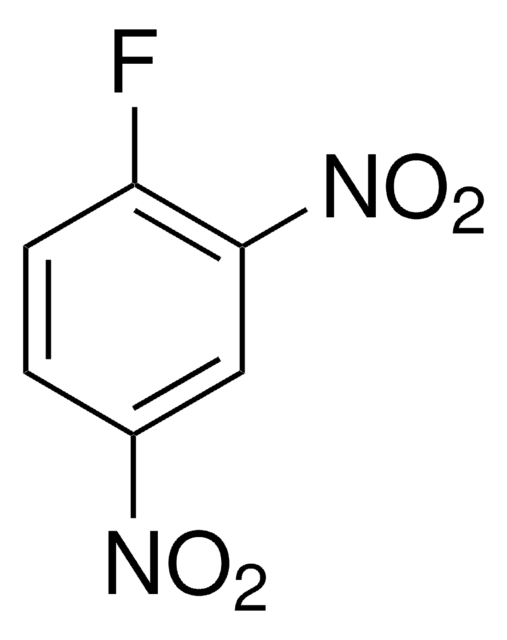377627
2-Imino-1-imidazolidineacetic acid
98%
Synonyme(s) :
1-Carboxymethyl-2-iminoimidazolidine, Cyclocreatine
Sélectionner une taille de conditionnement
Sélectionner une taille de conditionnement
About This Item
Produits recommandés
Niveau de qualité
Essai
98%
Forme
solid
Solubilité
1 M HCl: soluble 25 mg/mL, clear, colorless
Groupe fonctionnel
carboxylic acid
Chaîne SMILES
OC(=O)CN1CCNC1=N
InChI
1S/C5H9N3O2/c6-5-7-1-2-8(5)3-4(9)10/h1-3H2,(H2,6,7)(H,9,10)
Clé InChI
AMHZIUVRYRVYBA-UHFFFAOYSA-N
Catégories apparentées
Description générale
Application
Growth inhibition of Hodgkin disease-derived cell lines
Investigations into effects in rat hepatocarcinogenesis model
Actions biochimiques/physiologiques
Mention d'avertissement
Warning
Mentions de danger
Conseils de prudence
Classification des risques
Eye Irrit. 2 - Skin Irrit. 2 - STOT SE 3
Organes cibles
Respiratory system
Code de la classe de stockage
11 - Combustible Solids
Classe de danger pour l'eau (WGK)
WGK 3
Point d'éclair (°F)
Not applicable
Point d'éclair (°C)
Not applicable
Équipement de protection individuelle
dust mask type N95 (US), Eyeshields, Gloves
Faites votre choix parmi les versions les plus récentes :
Déjà en possession de ce produit ?
Retrouvez la documentation relative aux produits que vous avez récemment achetés dans la Bibliothèque de documents.
Les clients ont également consulté
Active Filters
Notre équipe de scientifiques dispose d'une expérience dans tous les secteurs de la recherche, notamment en sciences de la vie, science des matériaux, synthèse chimique, chromatographie, analyse et dans de nombreux autres domaines..
Contacter notre Service technique















